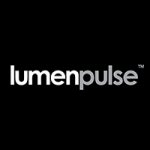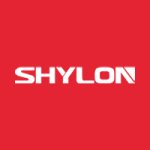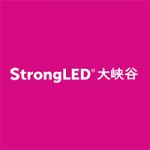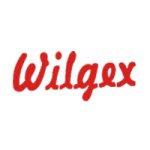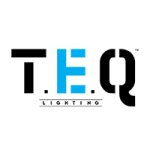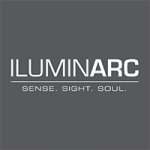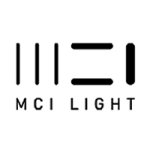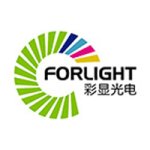Table of Contents Hide
- 1 Unveiling the beauty of architecture
- 2 Architectural emphasis
- 3 Aesthetic enhancement
- 4 Environmental integration
- 5 Defining identity
- 6 Cultural and artistic expression
- 7 Seasonal and festive decor
- 8 Visibility and safety
- 9 Facade lighting techniques
- 10 LED technology
- 11 Media facades
- 12 Smart, intelligent facade lighting
- 13 Communication protocol
- 14 Types of facade lighting fixtures
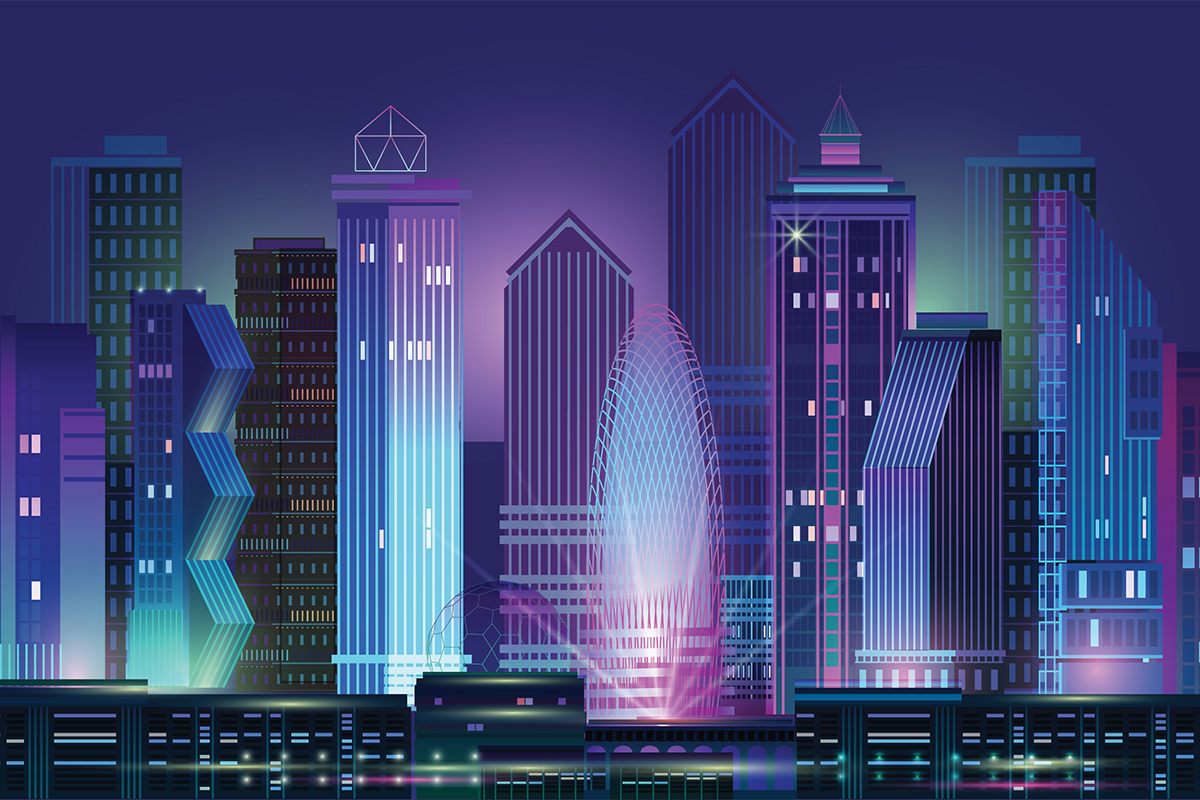
Unveiling the beauty of architecture
Facade lighting is a creative endeavor that involves the strategic and artistic use of light to illuminate the exterior of buildings or structures for aesthetic, architectural, and practical purposes. It is a deliberate, thoughtful application of light that transforms the appearance of a structure during nighttime hours, emphasizing its architectural features and contributing to the overall visual identity of the building in its urban or natural environment. Beyond its aesthetic role, facade lighting also serves functional purposes, such as improving visibility, ensuring safety, and contributing to the overall atmosphere of the structure. Façade lighting is an integral part of the broader architectural design process. Façade lighting addresses the transition from daytime to nighttime, ensuring that the building maintains a strong visual presence after sunset. As natural daylight diminishes, artificial lighting takes over to ensure that the building remains visible and appreciated even after sunset.Architectural emphasis
Façade lighting is used to highlight and accentuate the architectural features of a building, showcasing details such as columns, textures, reliefs, and any unique design elements that contribute to the building's character and identity. Instead of allowing the building to disappear into darkness at night, façade lighting brings it to life, making it a prominent and visually striking element in the nighttime environment. This emphasizes the structure's aesthetic qualities, especially during the evening when natural light is limited. By directing light to specific areas, architects and lighting designers can highlight the craftsmanship and artistic aspects of the architecture. By emphasizing the vertical lines of columns and bringing out the textures in materials, façade lighting creates a sense of depth and dimension in the nighttime lighting. Façade lighting is used to showcase any unique or distinctive design elements that make a building stand out. This could include ornate carvings, sculptures, or other architectural details that contribute to the building's identity and character. Façade lighting also works to showcase any unique or distinctive design elements that make a building stand out. This could include ornate carvings, sculptures, or other architectural details that contribute to the building's identity and character. By strategically illuminating specific features, façade lighting transforms the building into a visual spectacle during the evening, contributing to the overall aesthetic appeal of both the structure and its surrounding environment.Aesthetic enhancement
Façade lighting is fundamentally about improving the visual appeal of a building or structure. It goes beyond mere illumination; it is a deliberate design strategy aimed at enhancing the aesthetic qualities of the exterior. The effectiveness of façade lighting is closely tied to the quality of the lighting scheme. Well-designed lighting plans take into consideration the architectural features, the building's design, and the desired visual impact. This includes factors such as the placement, intensity, and color temperature of the lights. Façade lighting contributes directly to the visual beauty of the building. By strategically illuminating key elements, such as architectural details, textures, or unique features, the lighting enhances the inherent beauty of the structure. This can evoke a sense of elegance, sophistication, or drama, depending on the design intent. Façade lighting has the power to transform the nighttime identity of a building, making it stand out and become a focal point in its surroundings. Well-executed façade lighting strives to create a memorable visual impact. Buildings with distinctive and thoughtfully lit façades are more likely to be remembered and appreciated by viewers. The lighting design becomes an integral part of the building's identity. Façade lighting pays special attention to architectural features that contribute to the overall design. This may include highlighting columns, facades, arches, or other elements that define the character and uniqueness of the building.Environmental integration
Façade lighting considers the building's context and surroundings. The broader visual context, including the architectural style of the region or cityscape, is taken into consideration. Neighboring buildings play a crucial role in the visual context. Façade lighting accounts for the presence of nearby structures, ensuring that the illuminated building harmonizes with its architectural neighbors rather than creating visual discord. It seeks to create harmony between the illuminated structure and its environment, ensuring that the lighting scheme integrates seamlessly into the larger visual landscape. Façade lighting can be designed to integrate with the natural environment, considering factors such as surrounding landscapes, neighboring buildings, and the overall visual context. This harmonious integration ensures that the lighting complements rather than detracts from the surrounding elements. By considering the building's context, façade lighting is designed to be complementary. It enhances the architecture without overpowering it, allowing the illuminated structure to be a part of the nocturnal landscape while preserving the integrity of the surrounding elements.Defining identity
Facade lighting plays a crucial role in shaping the identity and character of a cityscape. The strategic use of light highlights the architectural diversity and richness of the urban environment, contributing to a visually appealing cityscape. In urban environments, facade lighting can turn buildings into landmarks, contributing to the identity and character of a cityscape. Iconic structures illuminated at night become recognizable symbols of a city. Iconic structures, when illuminated at night, become highly recognizable symbols of a city. These illuminated landmarks are often associated with the identity of the city itself, serving as visual icons that residents and visitors alike can identify and appreciate. This is particularly important for commercial establishments seeking to promote their brand identity, attract attention, and distinguish themselves in the nighttime cityscape. Illuminated buildings and landmarks often become major tourist attractions. They may carry symbolism and significance, representing historical events, cultural values, or architectural milestones. This adds layers of meaning to the cityscape, creating a narrative that resonates with both locals and visitors. Visitors are drawn to the beauty and uniqueness of the illuminated buildings, creating a positive impact on tourism and contributing to the economic and cultural vibrancy of the city.Cultural and artistic expression
Facade lighting is a form of cultural and artistic expression. It serves as a dynamic and expressive medium for cultural and artistic representation in the urban environment. Facade lighting transforms buildings into canvases, allowing cities to celebrate their cultural identity, showcase artistic creativity, and create a visually captivating and meaningful nighttime experience for both residents and visitors. Cities leverage facade lighting as a medium to convey cultural themes. Whether highlighting architectural elements inspired by cultural traditions or using lighting colors and patterns associated with cultural symbols, the lighting becomes a visual representation of the city's cultural identity. The play of light on building facades allows for innovative and artistic expressions, turning structures into temporary art installations that can change dynamically over time. The dynamic use of light can convey narratives related to the city's past, present, and future, creating a unique storytelling experience for those who engage with the illuminated urban environment. The cultural and artistic aspects of facade lighting contribute to a city's tourism appeal. Visitors are drawn to the unique visual experiences created by illuminated buildings, offering them a cultural journey and a memorable experience.Seasonal and festive decor
Façade lighting is often used to celebrate holidays and special occasions. The enhanced aesthetics contribute to a positive and celebratory ambiance, uplifting the spirits of residents and visitors alike. Buildings can be adorned with decorative lighting arrangements, colors, and patterns, contributing to the festive spirit of the community and fostering a sense of unity and joy. The use of specialized lighting enhances the visual appeal of the building exteriors, transforming them into vibrant and festive displays. Decorative lighting adds a touch of creativity and aesthetics, turning the building into a visually captivating element of the celebration. The choice of colors and patterns contributes to the overall atmosphere and theme of the celebration, whether it's patriotic colors for a national holiday or vibrant hues for a festive occasion. Façade lighting encourages community engagement as residents and businesses participate in the collective effort to decorate buildings for special occasions. The visual spectacle of illuminated buildings creates a sense of joy and celebration, promoting a positive and communal atmosphere.Visibility and safety
Façade lighting contributes to safety and security by eliminating dark areas, enhancing visibility, discouraging intruders, providing a sense of safety, preventing accidents, and supporting the effectiveness of surveillance systems. The absence of dark spaces enhances overall visibility, reducing hiding spots and discouraging potential intruders or unauthorized individuals from approaching the building unnoticed. Improved visibility contributes to a heightened sense of awareness and allows individuals to identify potential threats, enhancing overall safety. The visible and well-lit surroundings create an environment where trespassers are more likely to be noticed, discouraging unauthorized access and enhancing the security of the building. Façade lighting provides a sense of safety and security for occupants and visitors by creating a well-lit and welcoming environment. Improved visibility reduces the risk of slips, trips, and falls, enhancing the safety of pedestrians and visitors navigating the surroundings of the building. Façade lighting provides assurance to building occupants and visitors that the external areas are well-monitored and secure. Well-lit exteriors complement security surveillance systems, ensuring that cameras and other monitoring devices capture clear images and footage.Facade lighting techniques
Diverse methods and approaches employed to achieve effective and aesthetically pleasing lighting on building facades. Wall washing is a technique commonly used in façade lighting to enhance the architectural features, minimizes shadows, emphasizes colors and materials. It creates a visually appealing and uniform distribution of light across the façade. The even distribution of light helps bring out the three-dimensional aspects of the architecture, making the building's features more pronounced and enhancing its overall aesthetics. Wall grazing in façade lighting is a technique that involves placing fixtures close to the building's wall and directing light upward or downward to highlight textures, patterns, and architectural details. This method adds drama, depth, and a sense of sophistication to the building's exterior. Up-lighting is designed to highlight architectural elements, create dramatic effects, and enhance the overall aesthetics of the building. Down-lighting effectively illuminates the vertical surfaces of a building, showcasing architectural details, textures, and materials. The interplay of light and shadows adds a dynamic quality to the façade, contributing to a nuanced and artistic lighting display. Spotlighting is a technique commonly employed in façade lighting to highlight specific architectural features, create focal points, and contribute to an aesthetically pleasing and dynamic nighttime appearance. Silhouetting involves creating a bold contrast between illuminated backgrounds and darkened objects or architectural elements. This technique is employed to emphasize form, create visual impact, and contribute to the overall aesthetic appeal of a building's exterior during nighttime illumination. Shadowing is a technique in facade lighting that involves strategically placing light fixtures to cast shadows on a building's surface. This technique is used to create depth, visual interest, and dramatic effects by leveraging the interplay of light and shadow.
LED technology
The adoption of LED technology has opened up a vast array of possibilities. It has revolutionized facade lighting by offering energy efficiency, versatility in color and design, precision control, and adaptability to various architectural contexts. The lower energy consumption of LED lights contributes to lower operating costs for facade lighting systems. The longevity of LEDs contributes to maintenance cost savings and ensures consistent facade illumination over an extended period. The compact size and design flexibility of LEDs allows for creative and customized designs that can adapt to the unique architectural details and spatial constraints of different buildings. The directional nature of LED light provides a high degree of control over the directionality of the emitted light. LED technology provides precise control over both the color temperature of white light and the color of the emitted light. The instant response of LEDs enhances control. The dimming capability of LED lights is instrumental in dynamic control over the brightness, CCT tuning (tunable white lighting) and RGB color mixing. The use of tunable white LED lights is valuable for achieving the desired ambiance and mood on a building's facade, whether it's a warm and inviting glow or a cool, contemporary appearance. LED facade lights often use RGB color mixing systems to create a wide spectrum of colors for dynamic and vibrant color displays. This feature is key to creating visually stunning and engaging lighting displays that capture attention and contribute to the architectural aesthetics. The integration of smart lighting control systems with façade lighting offers numerous advantages, including enhanced control, energy efficiency, adaptability, dynamic effects, and the ability to create engaging and interactive scenes and shows.Media facades
Media facades represent a distinctive and innovative application of LED technology in the realm of architectural and urban design. The integration of digital addressable LED technology in media facades allows for the creation of dynamic visual displays on building exteriors. This technology offers a high degree of flexibility, enabling designers to craft engaging and ever-changing content that can serve various purposes, from artistic expression to advertising and cultural representation. Digital addressable LED technology refers to a lighting system where each LED within an array or display can be individually controlled and addressed. This level of control allows for precise manipulation of each LED's color, intensity, and timing, enabling the creation of intricate and dynamic visual effects. Media facades can showcase a wide range of content, including animations, videos, graphics, and interactive elements. The dynamic nature of the displays distinguishes them from static facades and adds an element of movement and change. edia facades transform the appearance of buildings, turning them into dynamic canvases that can adapt to different themes, seasons, or events, contributing to the architectural identity of urban spaces. Iconic buildings with media facades become memorable landmarks, contributing to the visual identity of cityscapes. Buildings with media facades become advertising platforms, allowing businesses to promote products or convey brand messages in a visually striking and captivating manner. Artists can use media facades as canvases to showcase digital art, projections, or multimedia installations, contributing to the cultural richness of urban spaces.Smart, intelligent facade lighting
Integrating facade lighting with smart, intelligent lighting control systems opens up creative opportunities for experimenting with innovative lighting effects, dynamic color changes, and interactive features. This integration not only enhances the visual appeal of building facades but also provides a platform for artistic expression and dynamic urban experiences. Facade lighting can operate autonomously based on pre-programmed schedules, adapting to different lighting scenes at specific times or events without manual intervention. The programmability of intelligent lighting control systems allows users to customize lighting themes based on preferences, occasions, or specific artistic visions, adding a personal touch to the facade. The incorporation of interactive features allows facade lighting systems to respond to external stimuli, such as user interactions, environmental conditions, or programmed triggers, creating an engaging and participatory experience for viewers. Facade lighting can dynamically adjust to changing conditions, responding to factors like ambient light levels, time of day, or specific events, ensuring that the lighting remains effective and aesthetically pleasing. Designers can program color transitions, gradients, or even synchronized color changes, providing a visually dynamic and vibrant display that can adapt to different themes or moods. Integration with IoT (Internet of Things) facilitates interconnectivity with other smart environments or devices and allows facade lighting to becomes part of a larger smart city infrastructure.Communication protocol
A facade lighting system typically include a combination of LED lights, control mechanisms, and smart technologies to achieve specific lighting effects on building facades. Communication protocols define the rules and conventions for data exchange between components of the lighting system. Different protocols may offer varying levels of control, compatibility, and features. The use of various protocols in facade lighting systems enables advanced control strategies and the execution of complex light shows. The choice of protocols depends on factors such as the desired features, scalability, and compatibility with other technologies within the lighting system. In facade lighting, DMX (Digital Multiplexing) is employed to control individual lighting fixtures or groups of fixtures. Each fixture is assigned a unique address within the DMX universe, allowing for independent control of its color, intensity, and other parameters. DMX provides flexibility in programming lighting sequences and facilitates precise control over color mixing in RGB/RGBW/RGBA/RGBWA LED fixtures. The use of Ethernet-based protocols, such as Art-Net or sACN (Streaming ACN), in facade lighting provides a modern, scalable, and flexible approach to controlling lighting elements on building exteriors. Some Ethernet-based lighting systems leverage Power over Ethernet (PoE) technology. This allows both data and electrical power to be delivered over a single Ethernet cable, simplifying the installation and reducing the need for separate power cables for each fixture. Wireless communication protocols, such as Zigbee or Bluetooth, offer flexibility in installation and are suitable for scenarios where wired connections are impractical.Types of facade lighting fixtures
Facade lighting is implemented using various types of LED lights, leveraging their light distribution patterns, color options, control features, and other characteristics to create visually striking and dynamic lighting displays on building exteriors.Architectural floodlights provide powerful and intense illumination to highlight specific elements, textures, or entire facades. The high lumen output of floodlights ensures effective coverage, even on large facades. By casting light at an angle, floodlights create shadows and highlights that bring out the textures of materials such as stone, brick, or decorative cladding, adding depth and visual interest. Floodlights come in various beam angles, allowing for versatility in light distribution. Narrow beam angles are suitable for concentrating light on specific elements, while wider angles may be used for general facade illumination. This adaptability ensures that the lighting design aligns with the architectural vision.
LED wall washers are designed to provide uniform and consistent illumination across vertical surfaces. They distribute light evenly, minimizing shadows and ensuring that the entire facade receives a balanced level of illumination. ED wall washers are particularly effective for creating even illumination across large vertical surfaces, highlighting architectural features, and enhancing the visual impact of the facade. Wall washers can be used for architectural grazing. By casting light at a shallow angle, LED wall grazers create pronounced shadows and highlights, revealing the surface textures of materials such as stone, brick, or decorative cladding.
LED pixel bars or digital media tubes are designed to create dynamic and programmable lighting effects on building exteriors. These LED fixtures are characterized by a linear arrangement of individually addressable LED pixels along a bar or strip. Pixel-level control allows for precise adjustments of color, intensity, and other parameters for each LED, enabling complex lighting effects and animations. LED pixel bars can be programmed to create animations and motion effects. This may include moving patterns, flowing waves of light, or other dynamic sequences that add movement and visual interest to the facade. They are often used in conjunction with pixel mapping software for a visual representation of how the pixels will illuminate the building.
LED pixel dots are individually addressable LEDs arranged in a matrix or cluster, forming a pattern of discrete points of light. They can be arranged in patterns, shapes, or clusters to match the design intent or architectural features of the building. The ability to control each pixel individually allows for intricate motion patterns, flowing animations, and dynamic sequences that add movement and visual interest to the facade. Their ability to engage viewers through dynamic lighting displays and respond to various control inputs allows designers to unleash creativity and create memorable visual experiences on building exteriors.
LED strip lights are versatile and can be applied in various ways to achieve different lighting effects on facades. They are designed in a linear configuration, allowing them to provide continuous and even illumination along architectural elements, edges, or contours of a building. Outdoor LED strip lights are often used to outline architectural features, such as windows, doors, columns, or the overall shape of the building. This outlining effect adds definition and visual interest to the facade, especially during the evening or nighttime when the lighting becomes more pronounced. LED strip lights are available in RGB configurations, enabling a wide range of color options. Digital addressable LED strip lights can be programmed for dynamic lighting designs, such as color transitions, fading effects, or synchronized patterns.
LED neon flex provides a modern and energy-efficient alternative to traditional glass neon tubes. The neon-like glow creates a visually appealing and stylish effect, adding a decorative element to the facade. The diffused illumination reduces harsh contrasts and contributes to a smooth and elegant appearance on the facade. Flexible LED neon strip lights are commonly applied to highlight windows, doors, and other distinctive elements. They can be installed to follow continuous lines and contours of the building's architecture. This allows for seamless and uninterrupted lighting designs that accentuate the form and shape of the structure.
Window frame lights are specifically designed to outline or illuminate the window openings. This outlining effect draws attention to the windows, emphasizing the architectural details and creating a visually striking contrast between the illuminated frames and the surrounding facade.



